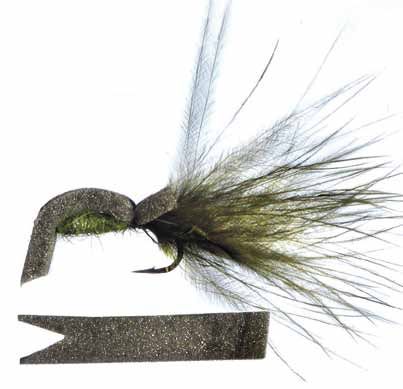 Presented from Issue 101
Presented from Issue 101
Over the last couple of months I have traveled to some of Australia’s most remote red sand country where there were fish in remote billabongs.
These are fed by the northern waters flowing into Lake Eyre Basin. To be invited onto a million acre station catching golden perch (yellow belly) and grunter was a great privilege and is another fishing adventure ticked off.
From there we went to the Snowy Mountains, caught trout out of the upper Murray—again in breathtaking scenery. However, we were horrified at the amount of carp in the lakes and waterways of this area. It is just devastating.
Back to reality trout and Tasmania though. Many boat fly fishers know of the technique of ‘hanging flies’. If you don’t know, it is basically leaving the flies to ‘hang’ when you have retrieved your wet flies up to the boat.
There are a few different variations. One which has given success for me this season is a two or three fly leader. It is the point fly that is the most important one. I was given this fly some years ago for fishing for bass in NSW impoundments. It will catch bream here in Tassie, but this season I have been catching trout. This fly is called a Wiggle and it is a little different than normal as it will dive and then float to the top again. This is due to the way the foam body is cut. This fly is fished on the point.
About 1.2m up the leader a nymph dropper of choice is added and then another 1.2m I like to add a Claret and a Mallard. My leaders are tied off a nine foot tapered leader. I find this gives a much better turn over than straight line leaders. This will give around a 17ft leader and is not hard to handle with the wind at your back.
 Wiggle
Wiggle
- Thread: Black
- Hook: 10-12 long medium weight
- Tail: Olive green marabou
- Body: Olive green – could be seal fur or a blend of some sort, it’s colour that counts
- Foam: Rainy’s olive evazote sheet foam in 2mm thickness
Method
- Thread full length of shank and tie in a marabou tail twice the length of the look shank. Cut away excess marabou.
- Cut a strip of foam one and a half times the length of the hook shank. Cut a V from the tail end and leave the front until the fly is finished. Tie the foam in with the V section protruding slightly over the top of the tail.
- Dub on the body, finishing back from the hook eye. Whip finish and cut thread away and varnish this. Pull the foam strip over the body not too tightly as you will pull the air out of the fly. This fly is designed to rise in the water when retrieving is stopped. Now make a small hole in the centre of the foam strip and push the eye of the hook through the foam to secure the foam. Put a nice big dob of glue on each side of the foam where the eye comes through.
- With a very sharp blade cut the foam protruding from the front of the fly back on an angle. Be careful doing this as one wrong cut and its start all over again.
- Now when using this fly it can be left static on the water surface with the other two flies hanging in the belly. These will be under the water surface. This is sometimes called a washing line hang. When retrieved the fly will dive taking the leader down and rise when retrieving is stopped.
- Experiment. You will soon get the idea when the fly is rising. Watch your leader carefully as fish will often take when the fly is rising. Season’s greetings, happy and safe fishing.
- Jan Spencer
